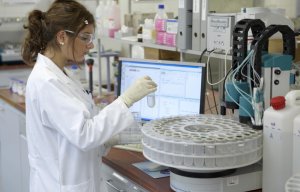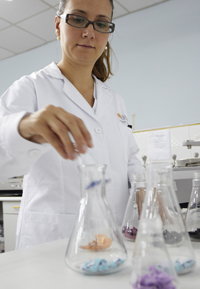
New Standard 100 by Oeko-Tex test criteria come into force
4 January 2011, Zurich - The International OEKO-TEX Association has, as usual at the start of the year, updated its criteria and limit values for use when testing textiles for harmful substances in accordance with the OEKO-TEX Standard 100. “For many years now, the list of criteria has provided effective protection against undesirable chemical substances and it is used very successfully by the textile and clothing industry and many retailers and distributors for quality control in this area,

4th January 2011
Innovation in Textiles
|
 4 January 2011, Zurich - The International OEKO-TEX Association has, as usual at the start of the year, updated its criteria and limit values for use when testing textiles for harmful substances in accordance with the OEKO-TEX Standard 100.
4 January 2011, Zurich - The International OEKO-TEX Association has, as usual at the start of the year, updated its criteria and limit values for use when testing textiles for harmful substances in accordance with the OEKO-TEX Standard 100.
“For many years now, the list of criteria has provided effective protection against undesirable chemical substances and it is used very successfully by the textile and clothing industry and many retailers and distributors for quality control in this area,” OEKO-TEX said in a statement recently.
The list also takes account of the regulations on harmful substances under the European REACh legislation, including the textile-relevant SVHC substances that have been added to it in 2010 from the Candidate List.
After a three-month transitional period, the following new regulations will come into force for all OEKO-TEX certification processes:
Short chain (C10 to C13) chlorinated paraffins and tris(2-chloroethyl)phosphate, which were already virtually banned under the OEKO-TEX Standard 100 for use as flame retardants, will now, in view of their classification as Substances of Very High Concern in the latest ECHA Candidate List, be explicitly included in the list of banned flame retarding substances. OEKO-TEX says, including them by name in this list should lead to better comparability. They will also be listed with the other banned (residual) chemicals in the list of criteria, because both substances are occasionally also used for other special applications. For both, the limit value is 0.1 per cent by mass.
A standard limit value of 90 ppm for total lead content has been set for all four OEKOTEX product classes, a limit which is well below that currently required by US legislation (CPSIA, Consumer Product Safety Improvement Act) of 300 ppm or, from August 2011, 100 ppm for articles for babies and children. However, the most essential requirement of the OEKO-TEX Standard 100 will remain the testing for extractable heavy metals using a controlled sweat solution, because this method of testing, by simulating the actual conditions of use, gives a more meaningful result with regard to the possible health risks from undesirable heavy metals in textile products than the total content, OEKO-TEX says.
The universal on-site visits which were introduced at the start of 2010 as a component of OEKO-TEX certification will continue as planned. “Even after one year, very real benefits can be seen both for the participating early stage production companies and for retailers in terms of the desired optimisation of the certification process,” a spokesperson for OEKO-TEX said.
It is the aim of the OEKO-TEX Association to have visited all companies holding an OEKO-TEX certificate by the end of 2013, in order to provide targeted assistance in implementing the required criteria in their quality control procedures, optimise the framework conditions for certification as far as possible and give companies practical tips on product labelling and using the OEKO-TEX label in their advertising.
You can obtain more information about the new test criteria and regulations from the OEKO-TEX Secretariat ([email protected] ) or the member institutes of the International OEKO-TEX Association (www.oeko-tex.com/institutes ).

Business intelligence for the fibre, textiles and apparel industries: technologies, innovations, markets, investments, trade policy, sourcing, strategy...
Find out more